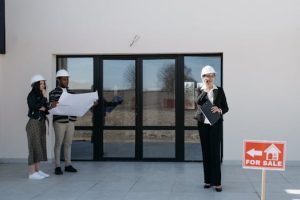Flipped Classrooms: Reversing the Traditional Model
In the world of education, innovation and change are essential in order to keep up with the ever-evolving needs of students. This is where the concept of Flipped Classrooms comes in – a teaching approach that has been making waves in recent years. In this article, we will explore the idea of Flipped Classrooms and how it is revolutionizing the traditional model of education.
What are Flipped Classrooms?
Flipped Classrooms, also known as inverted or reverse classrooms, are a teaching model where the traditional roles of classroom lectures and homework are reversed. In this approach, students are provided with instructional materials, such as video lectures or readings, to be completed at home. Classroom time is then dedicated to discussions, group activities, and projects that reinforce and apply the concepts presented in the materials.
This approach to education provides students with the opportunity to learn at their own pace and allows teachers to become facilitators of learning, rather than just delivering lectures. It also encourages active participation and collaboration among students, promoting a more engaged and interactive learning experience.
The Flipped Classroom Methodology
Phase 1: Pre-Class Preparation
The first step in implementing the Flipped Classroom model is to prepare the instructional materials that students will use at home. These materials can include pre-recorded video lectures, readings, podcasts, or any other resources that will engage students and provide them with the information needed to understand the lesson’s objectives.
This phase also requires teachers to set specific guidelines for students to follow when completing these materials, such as taking notes or answering questions. These guidelines will ensure that students are actively engaged and focused during the pre-class preparation phase.
Phase 2: In-Class Activities
In the second phase, students come to class prepared with the knowledge and understanding of the lesson’s concepts. This allows teachers to move away from traditional lectures and instead focus on interactive activities that reinforce and apply the material.
The in-class activities can vary from group discussions and debates to hands-on experiments and projects. This approach allows for a more dynamic and engaging learning environment, where students can apply what they have learned and collaborate with their peers.
The Benefits of Flipped Classrooms
One of the main benefits of Flipped Classrooms is the flexibility it provides for students. They can watch the lectures at their own pace, pause and revisit parts that they may not have fully understood, and complete the assignments in a more manageable time frame. This flexibility also accommodates different learning styles, catering to students who may excel in auditory, visual, or kinesthetic learning.
Moreover, the Flipped Classroom model allows students to take more responsibility for their learning and develop self-regulated learning skills. By completing the pre-class materials at home, students are encouraged to be more independent, and in-class activities promote critical thinking, problem-solving, and collaboration skills.
In Conclusion
The Flipped Classroom model has proved to be a game-changer in the world of education. By reversing the traditional model, it has opened up new and exciting possibilities for teaching and learning. It promotes engagement, collaboration, and flexibility, transforming students from passive listeners to active participants in their education.
As with any education model, there are always challenges and barriers to implementation. However, with the benefits that Flipped Classrooms bring, it is clear that this approach is here to stay, and its potential to revolutionize education is yet to be fully realized.








